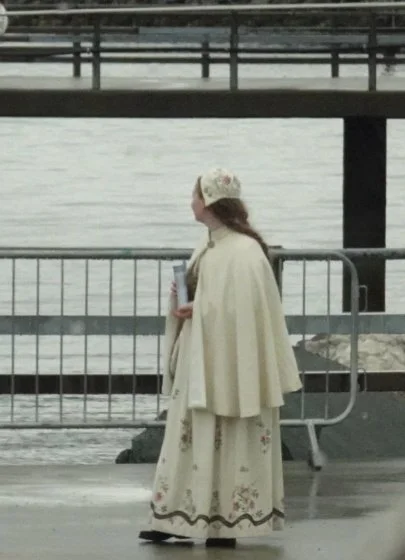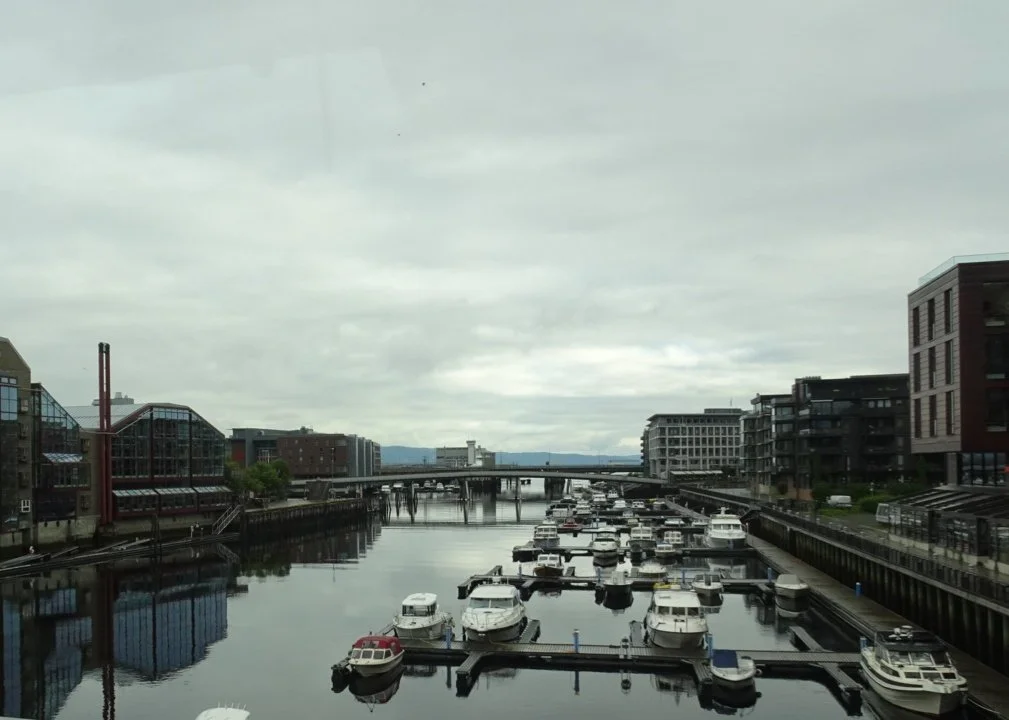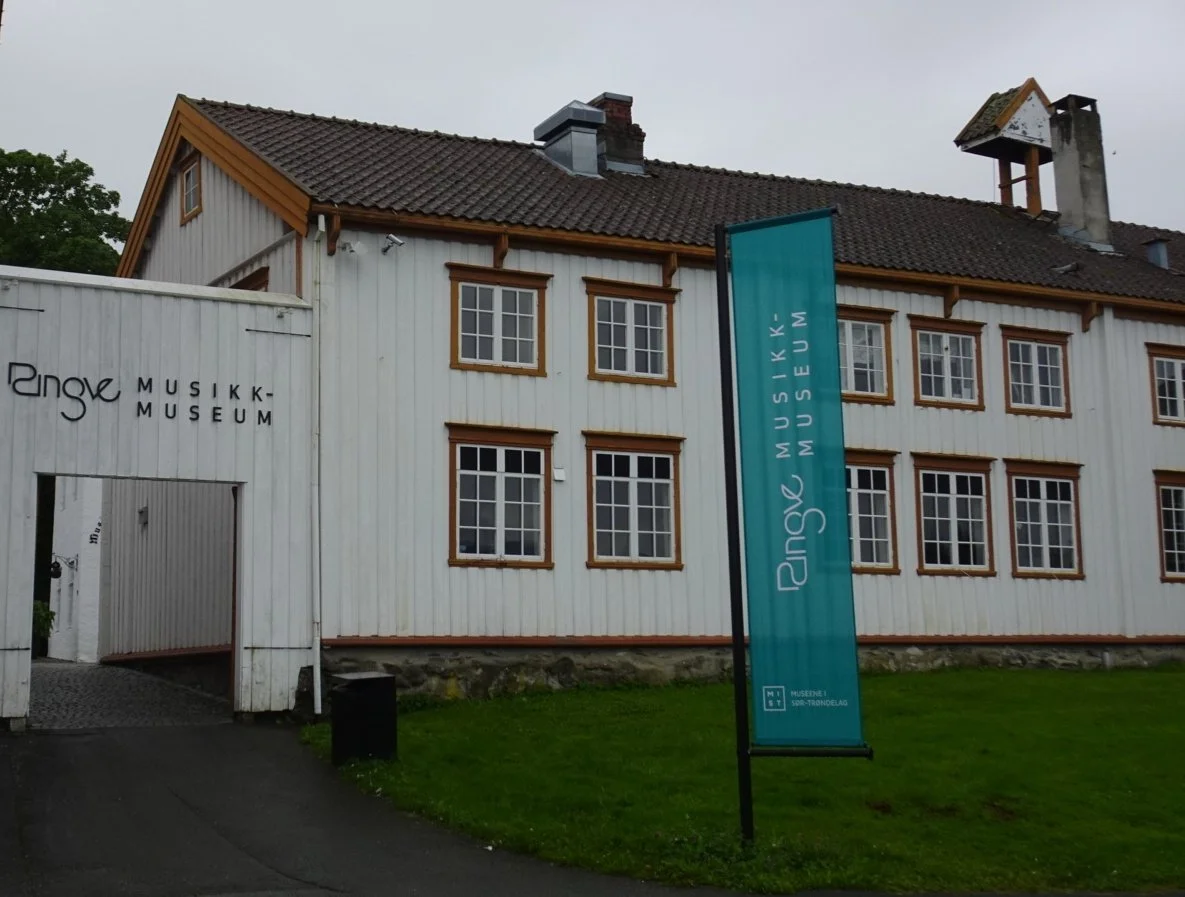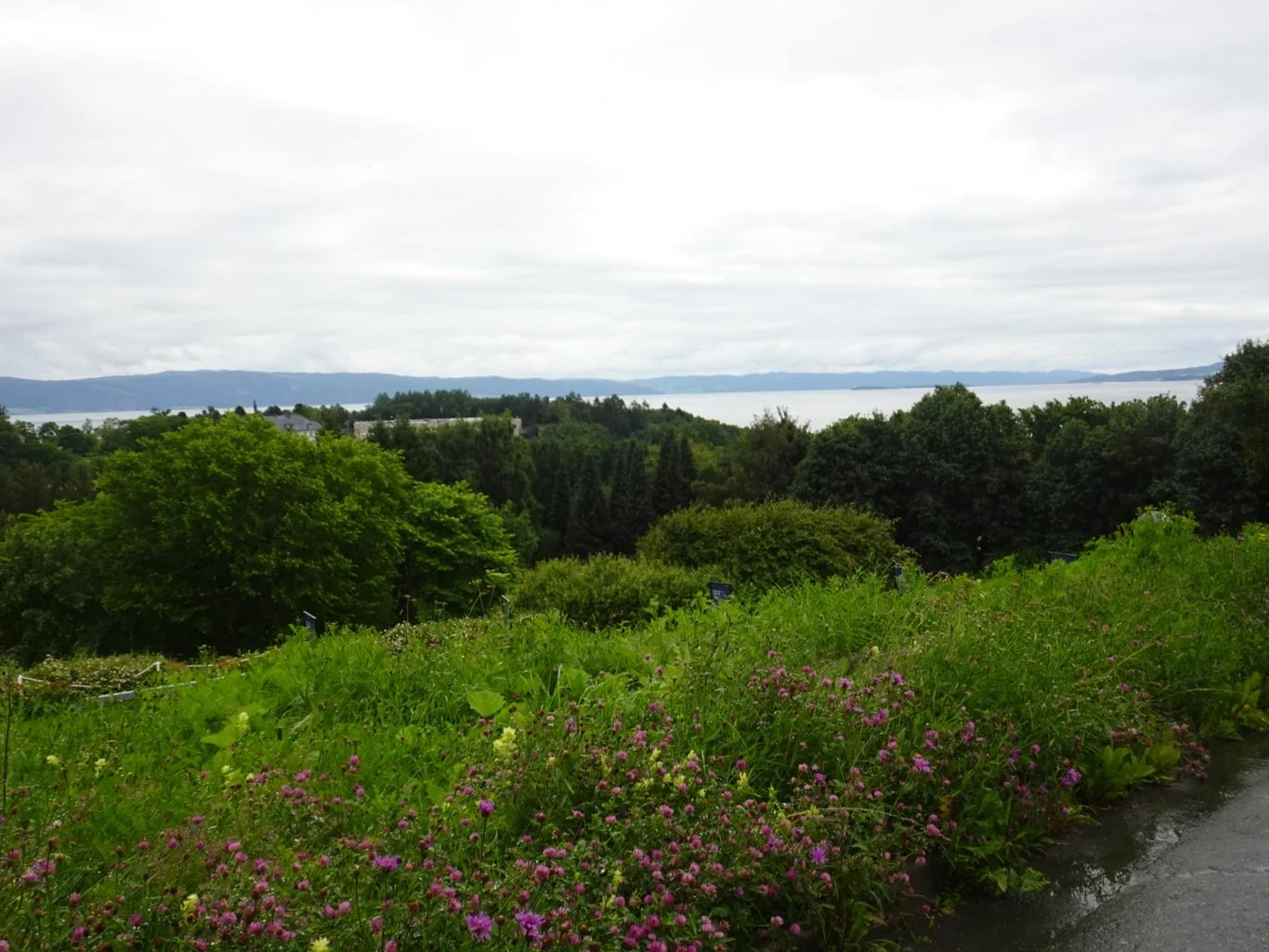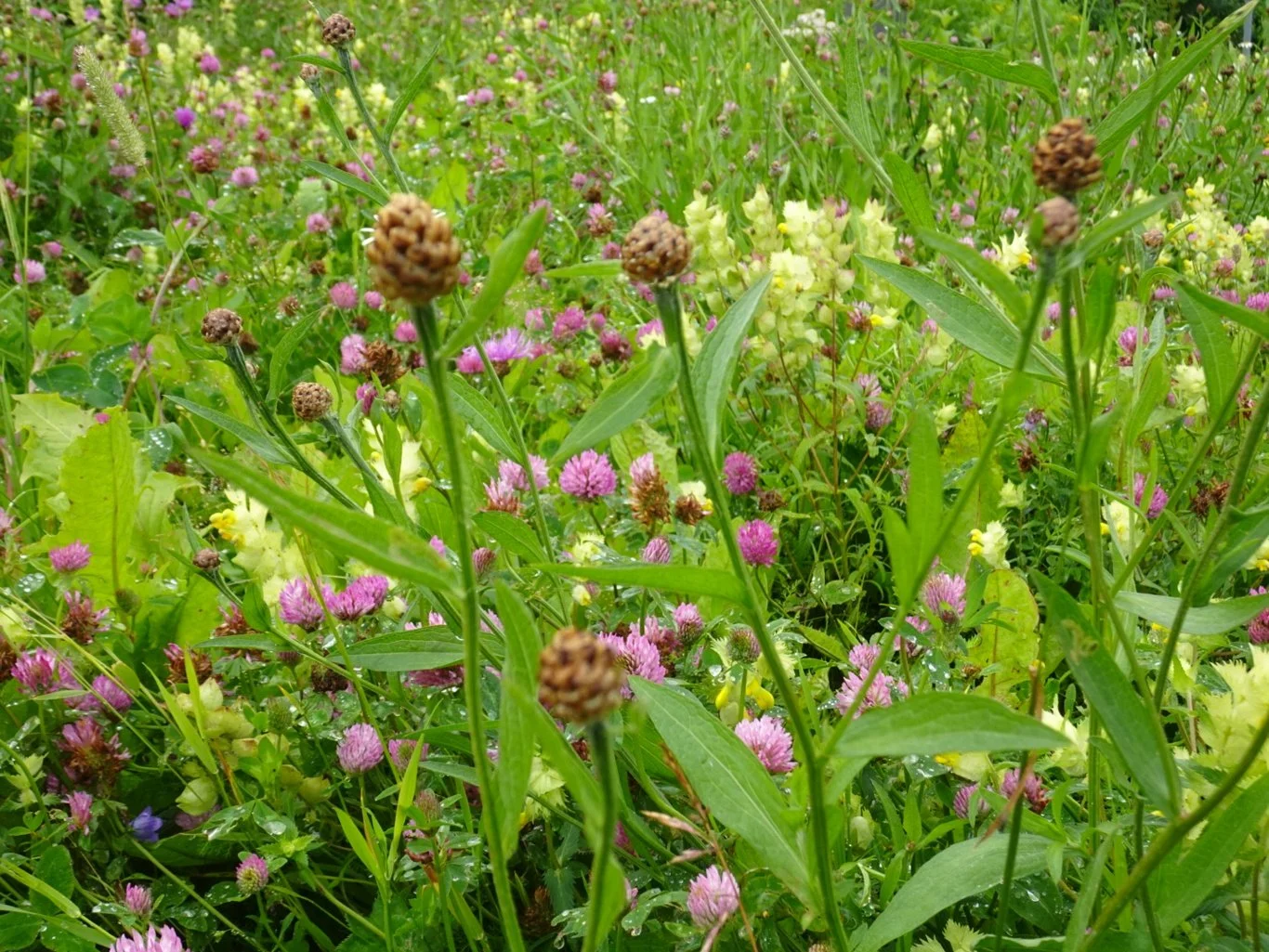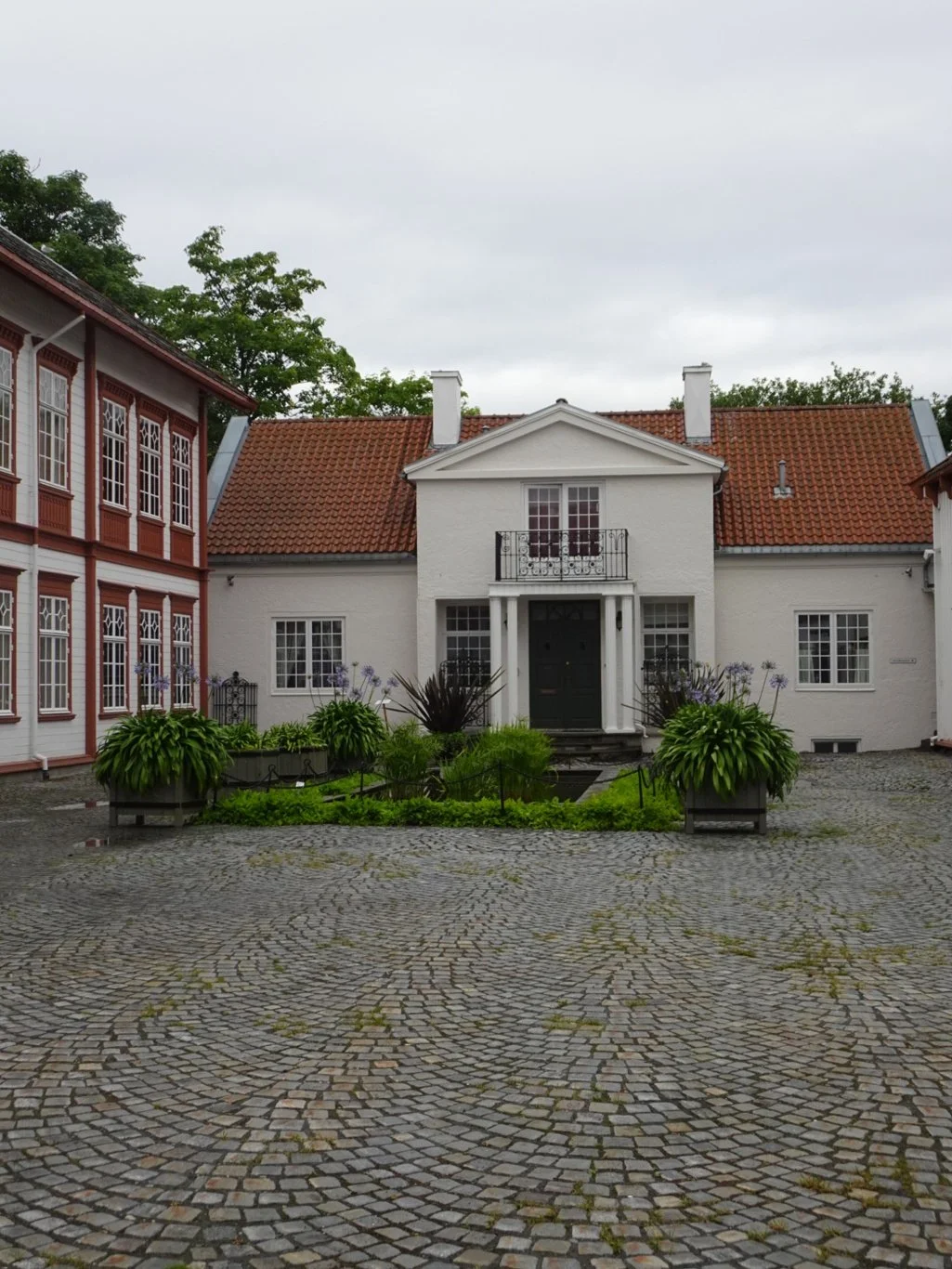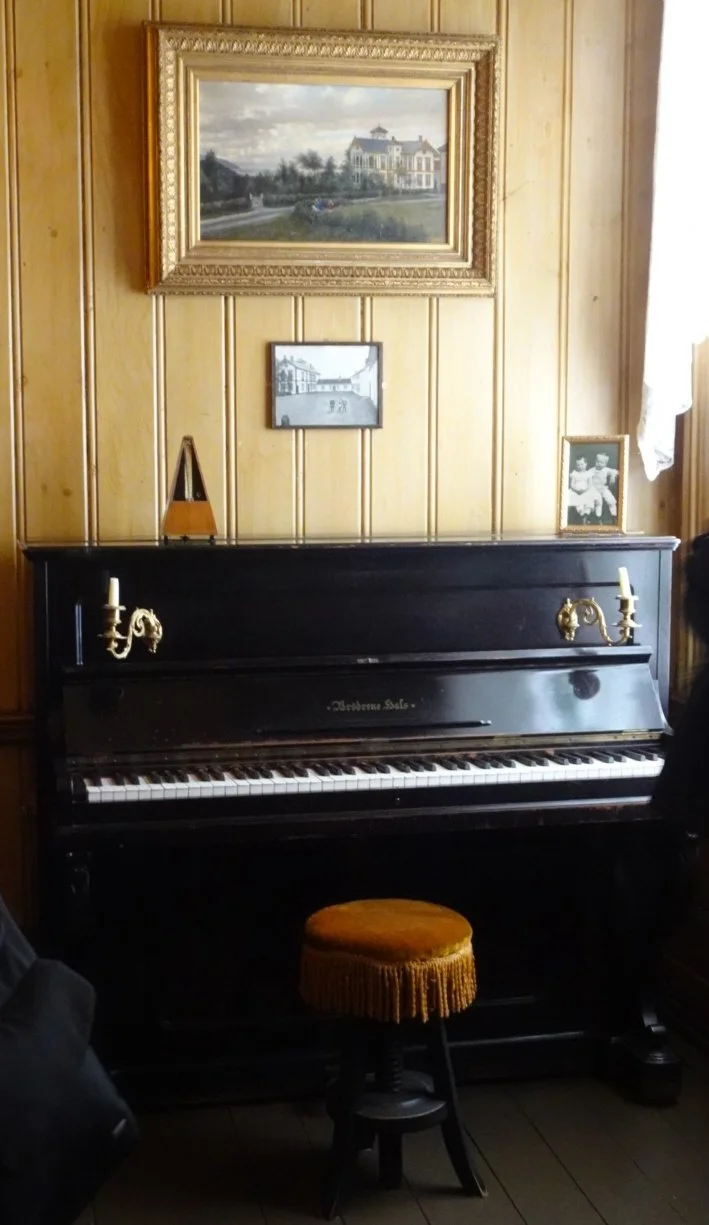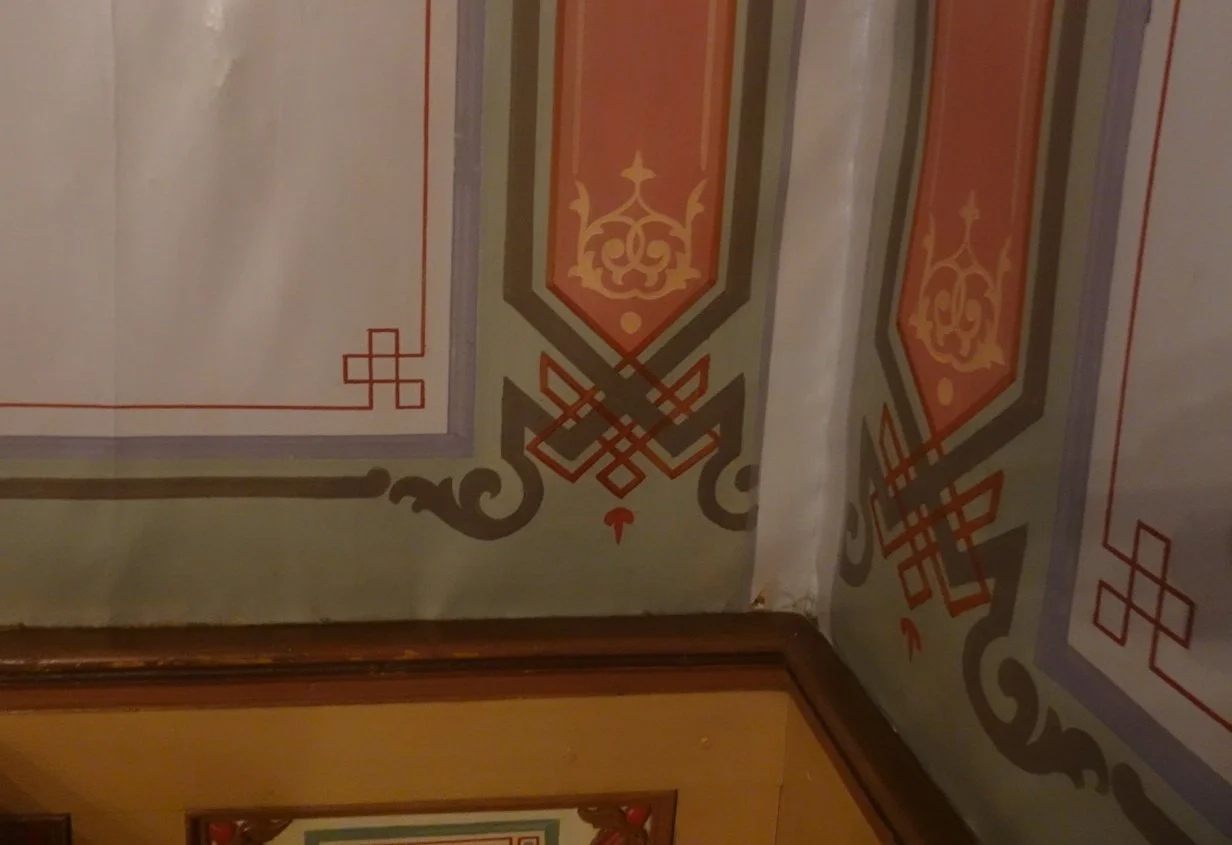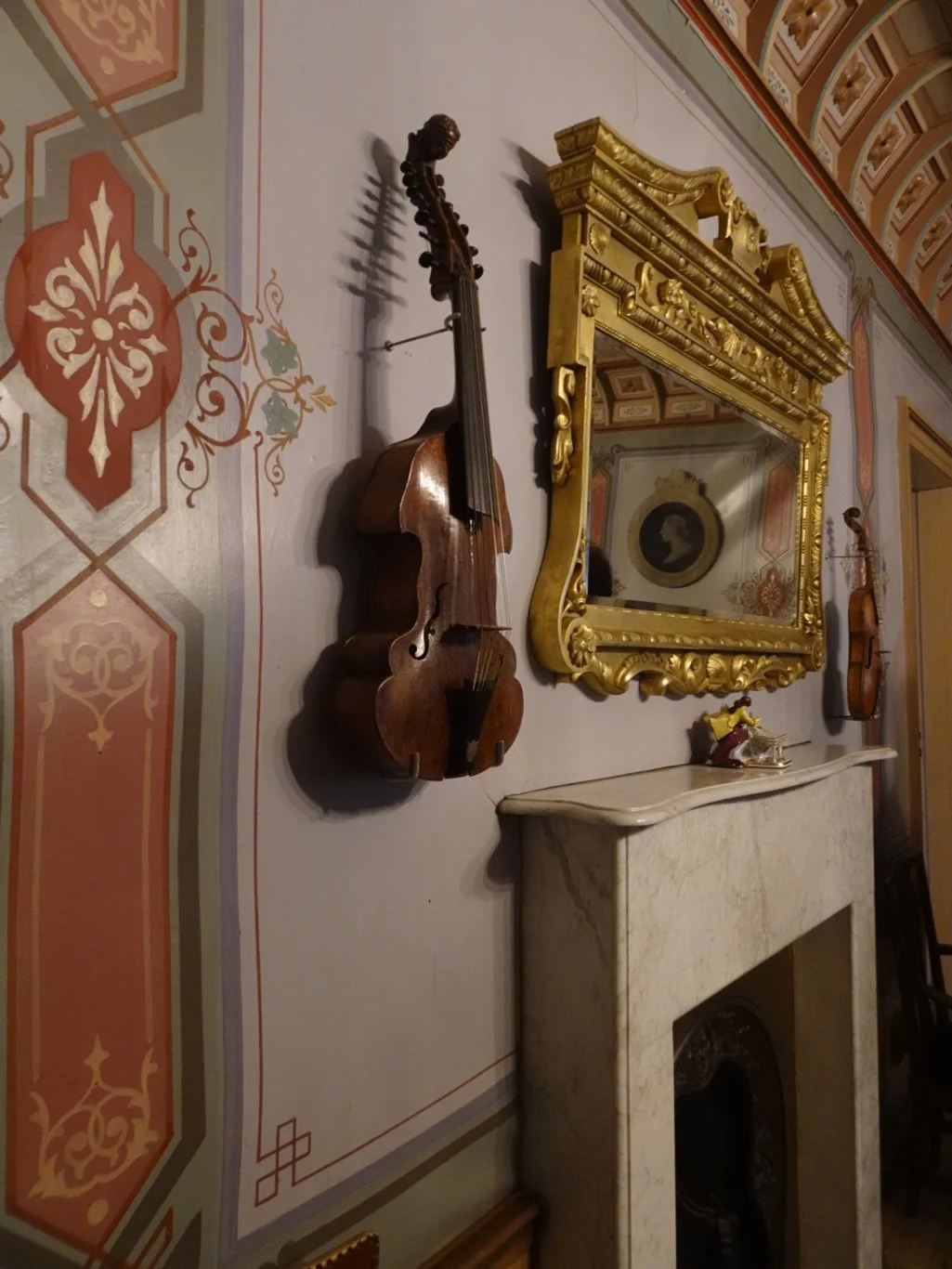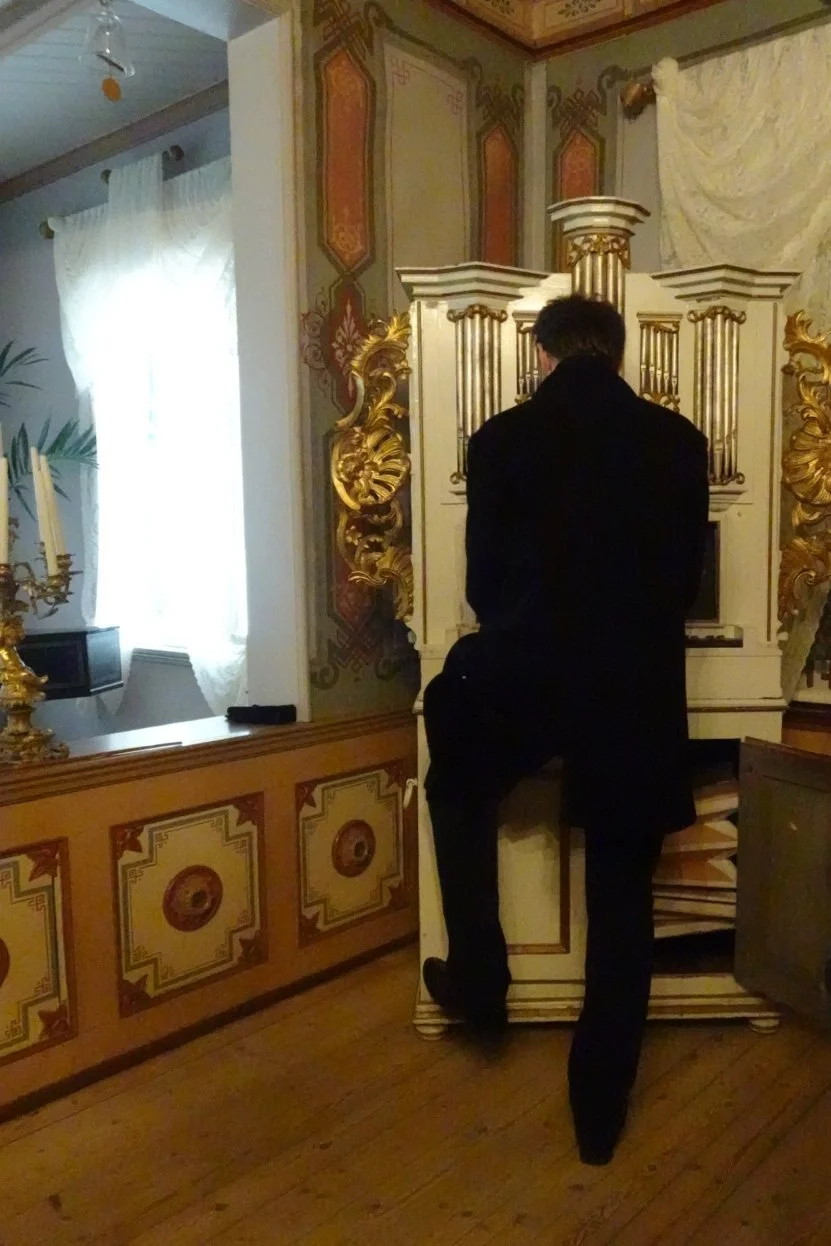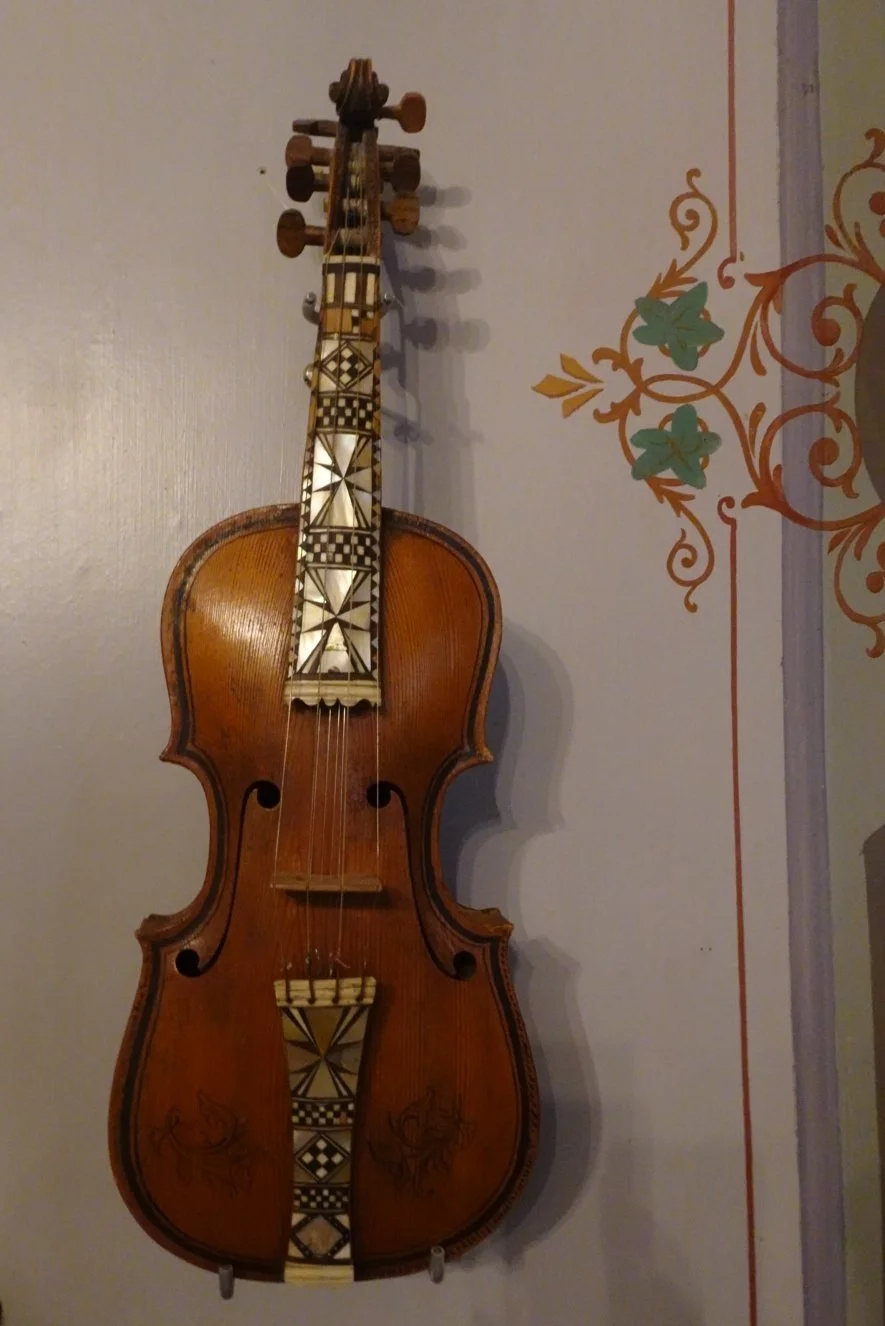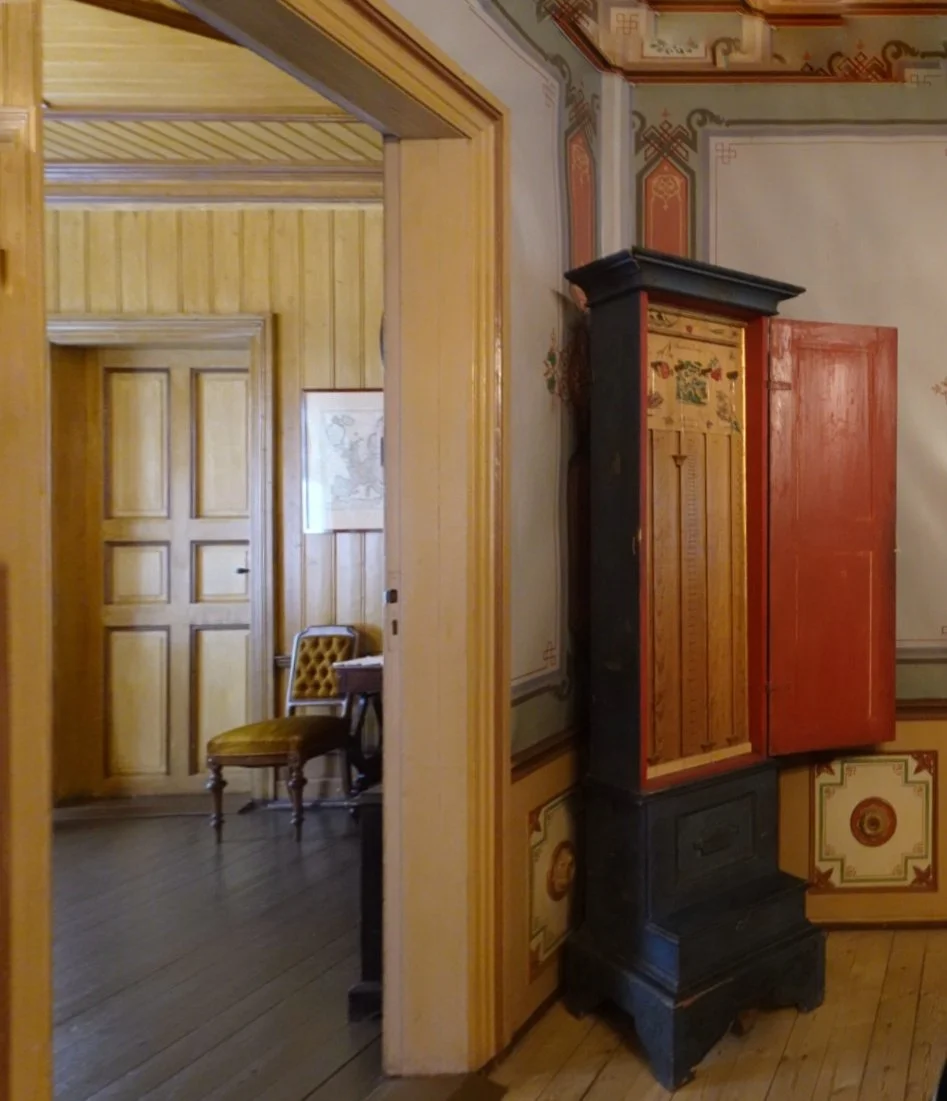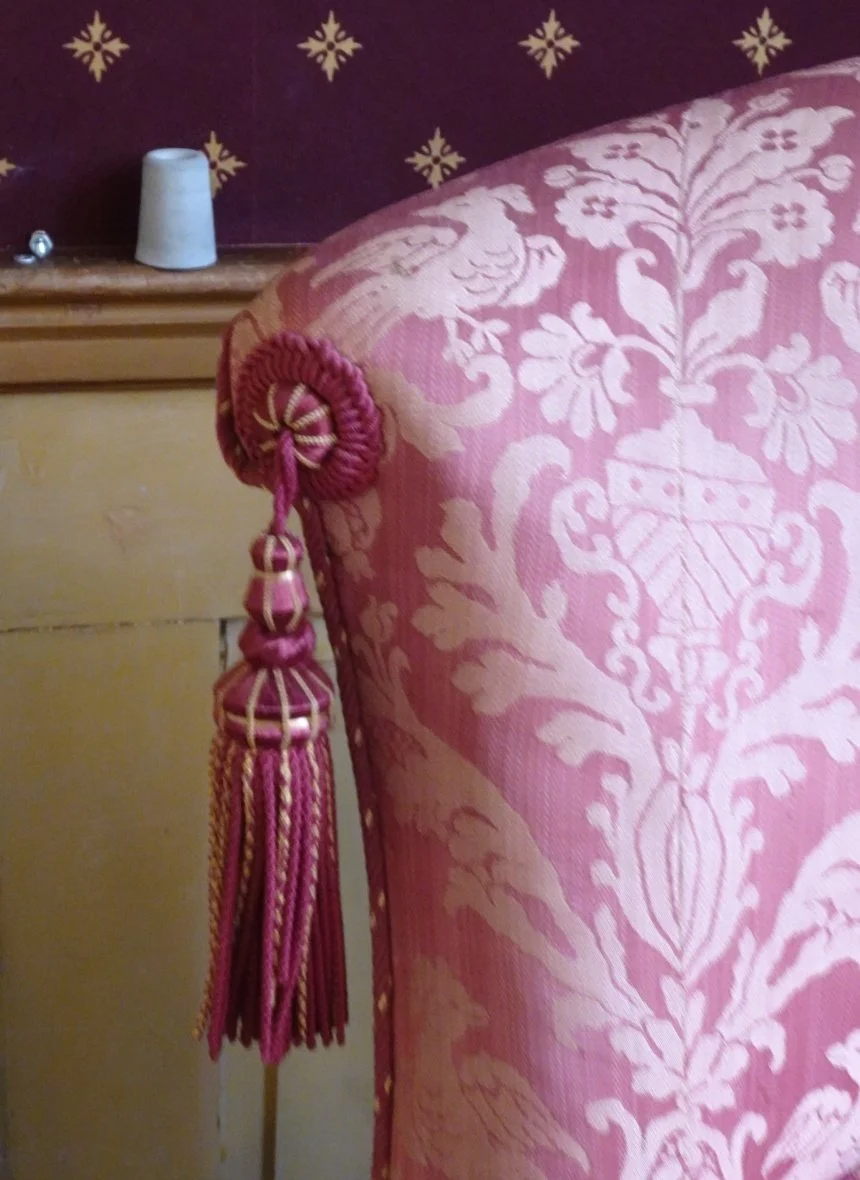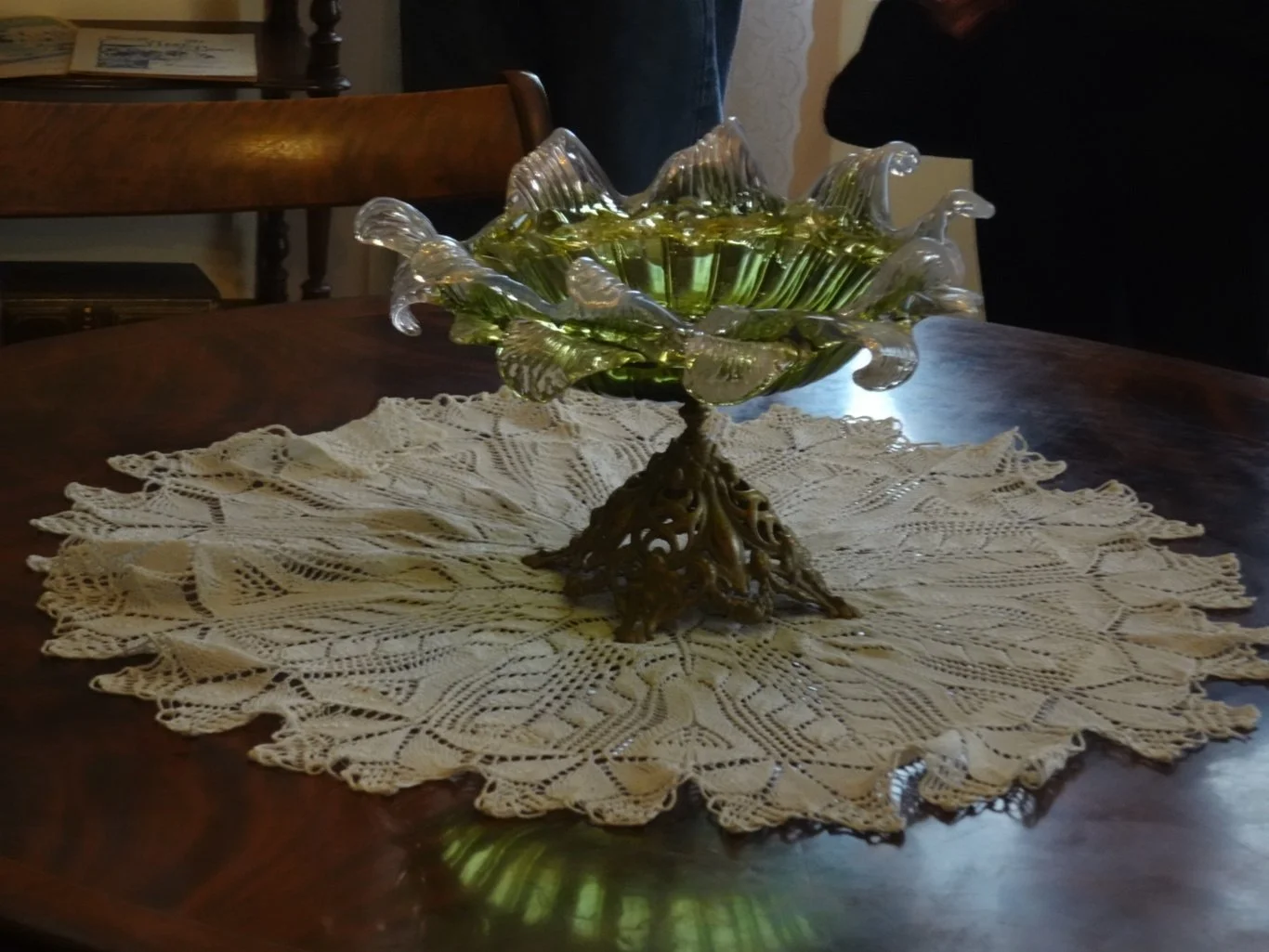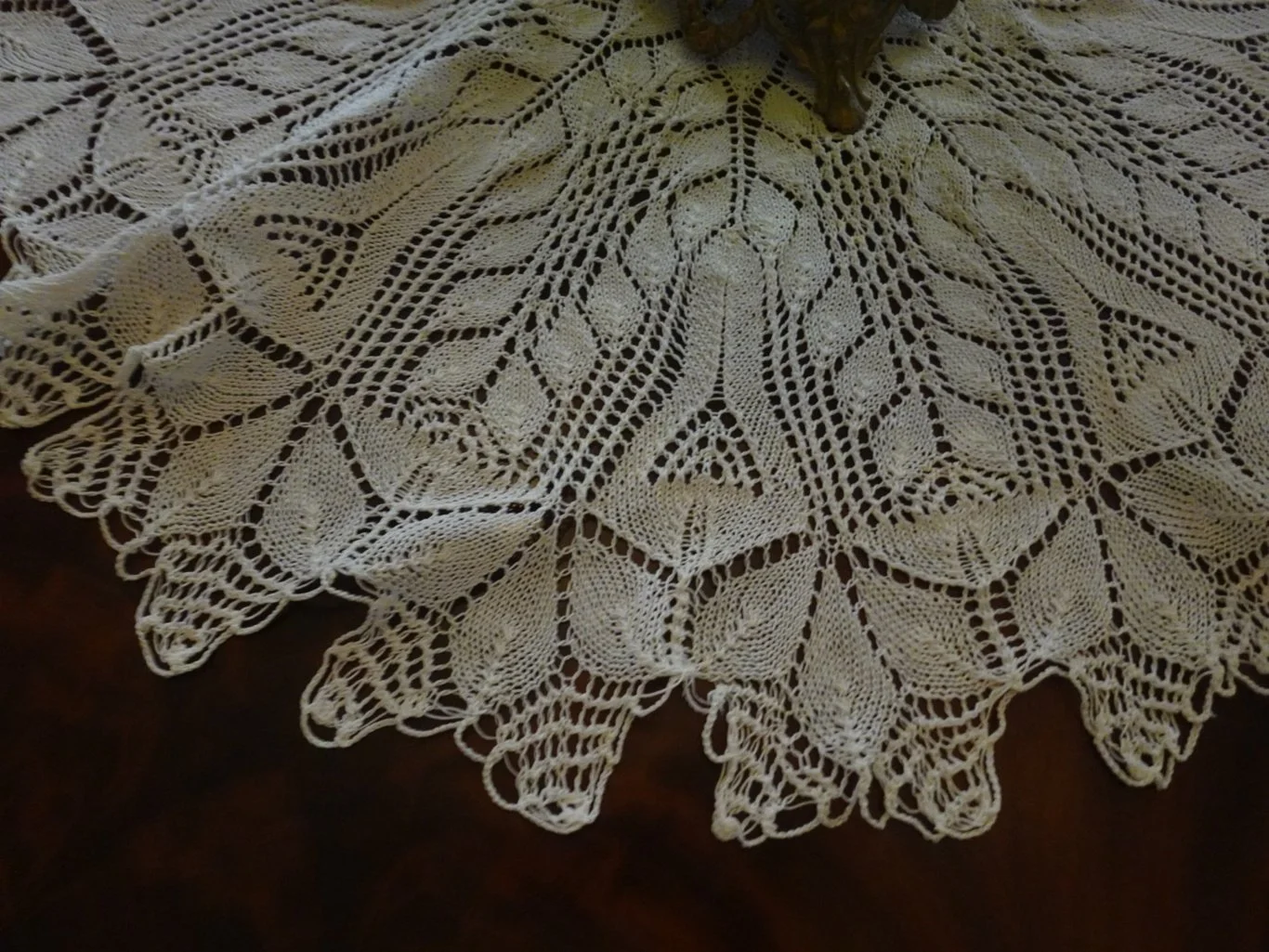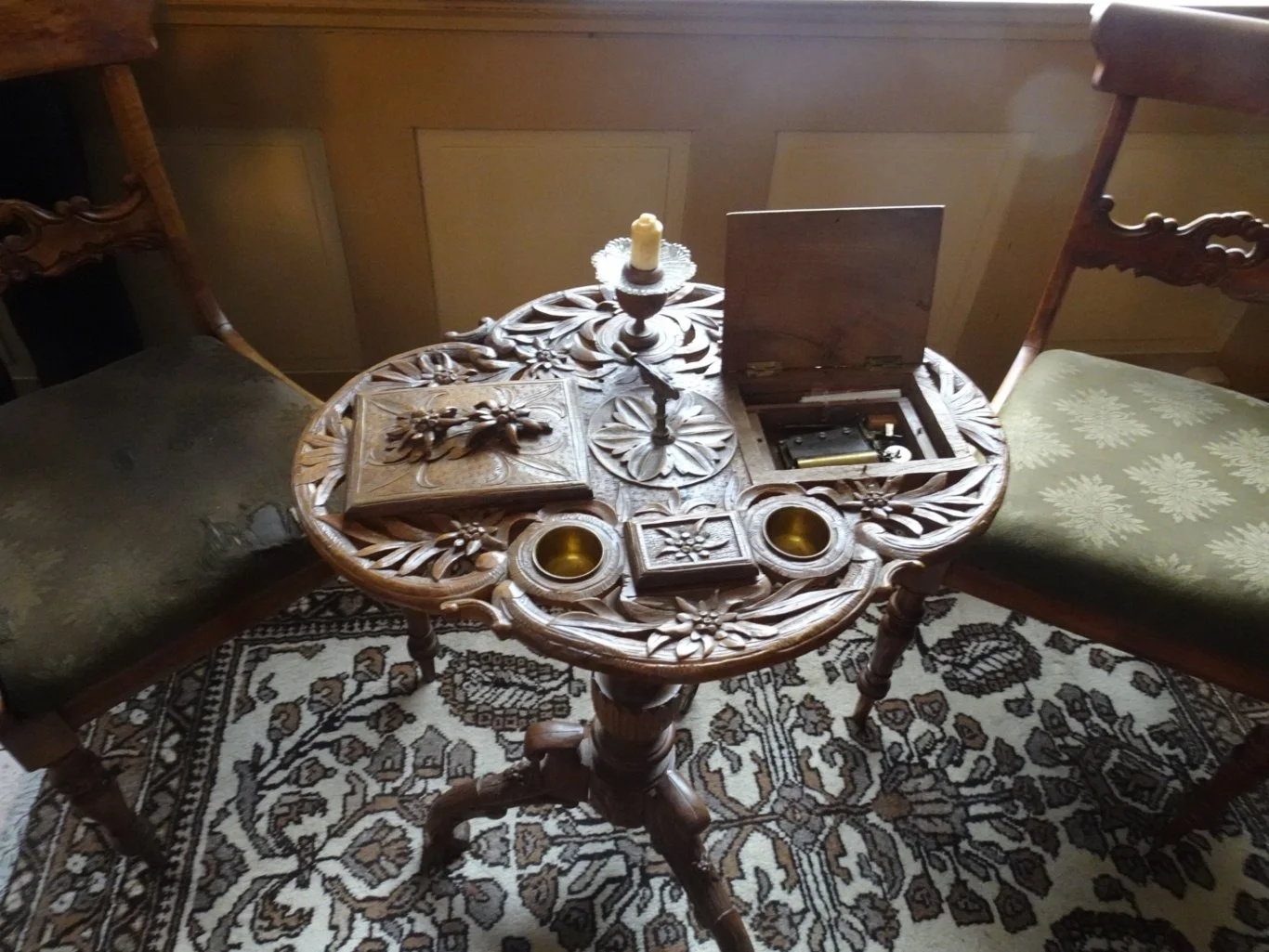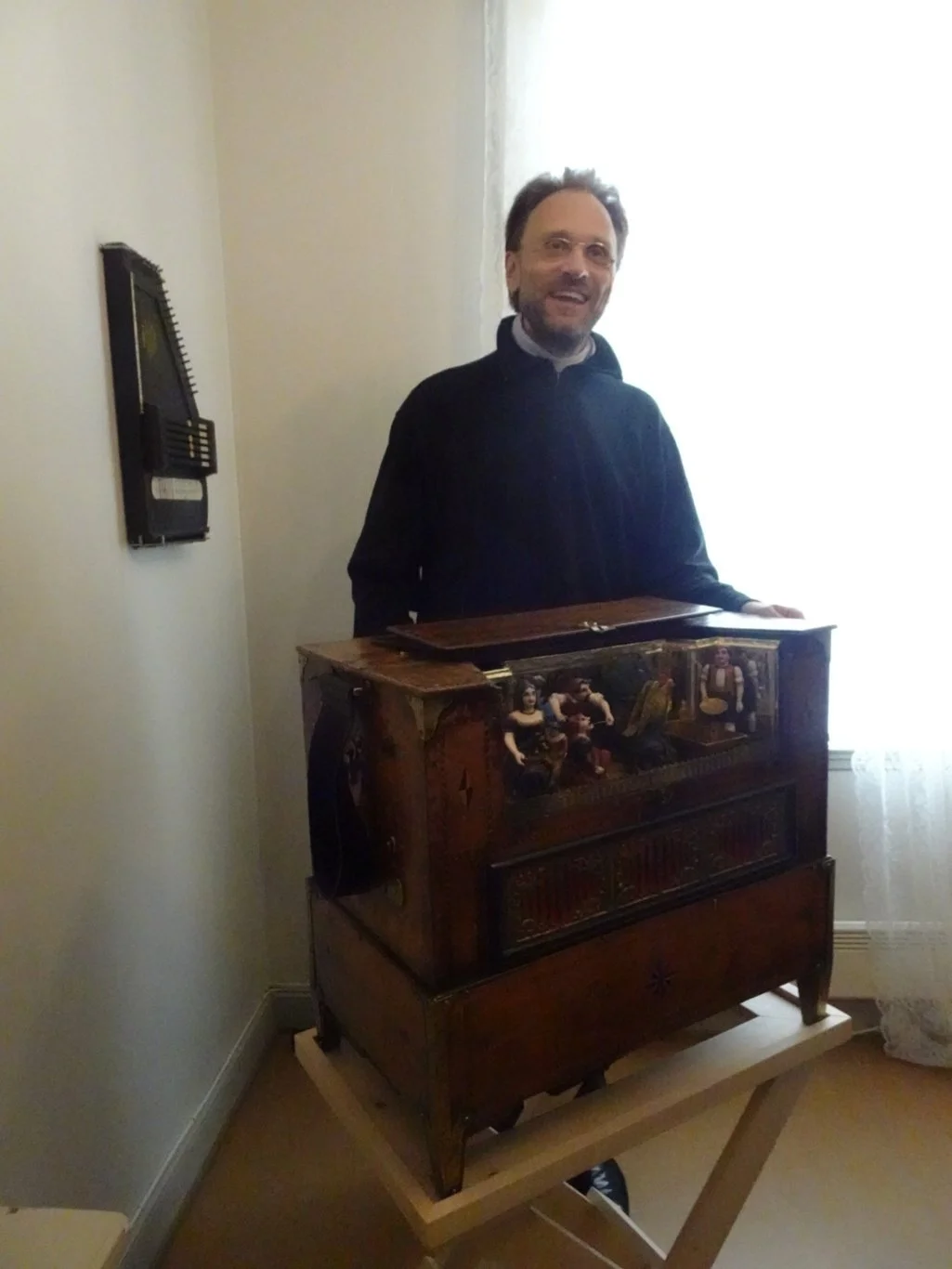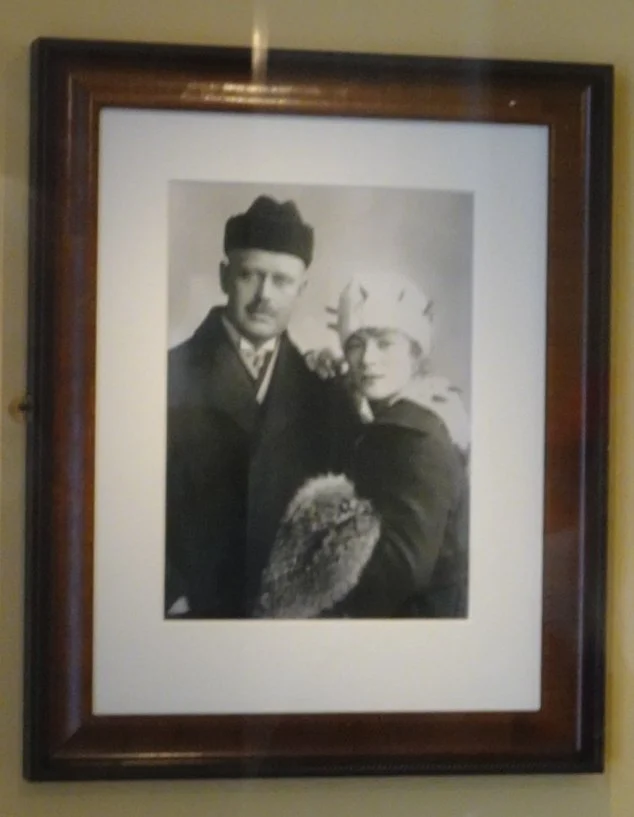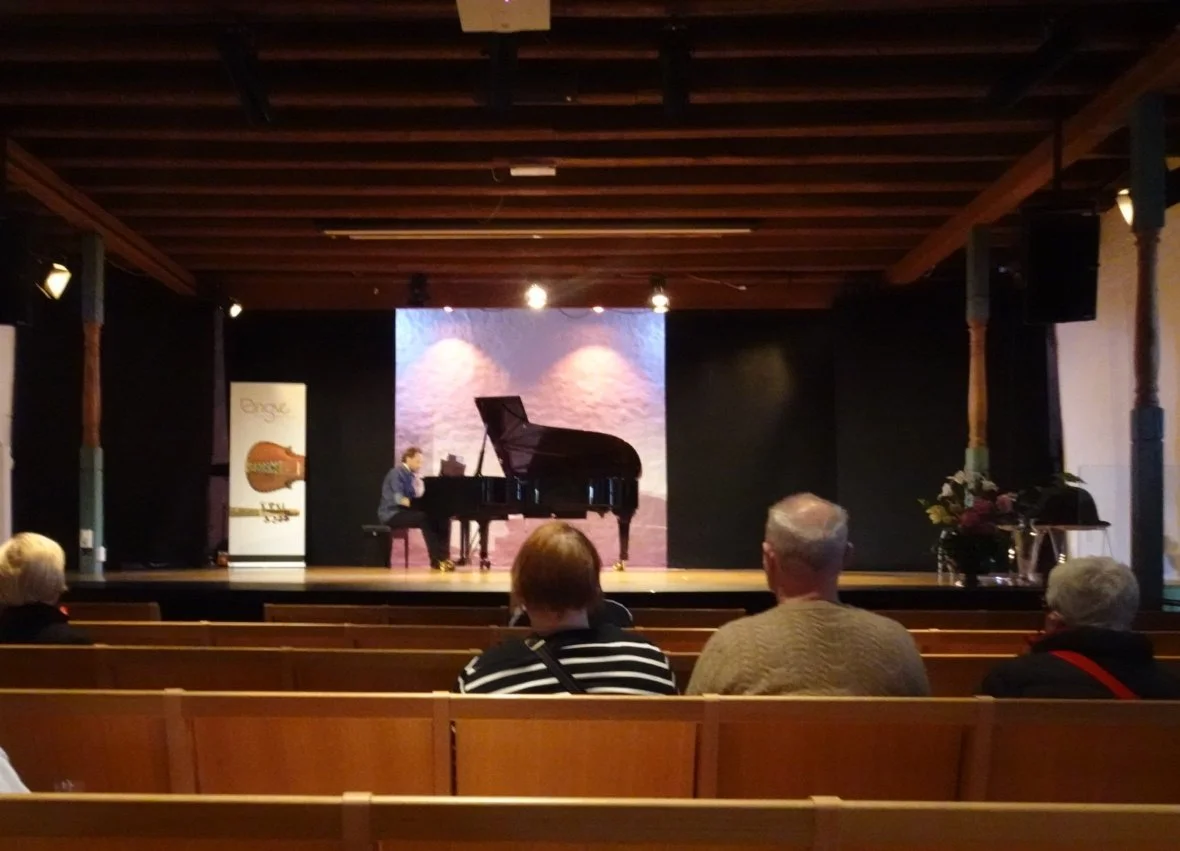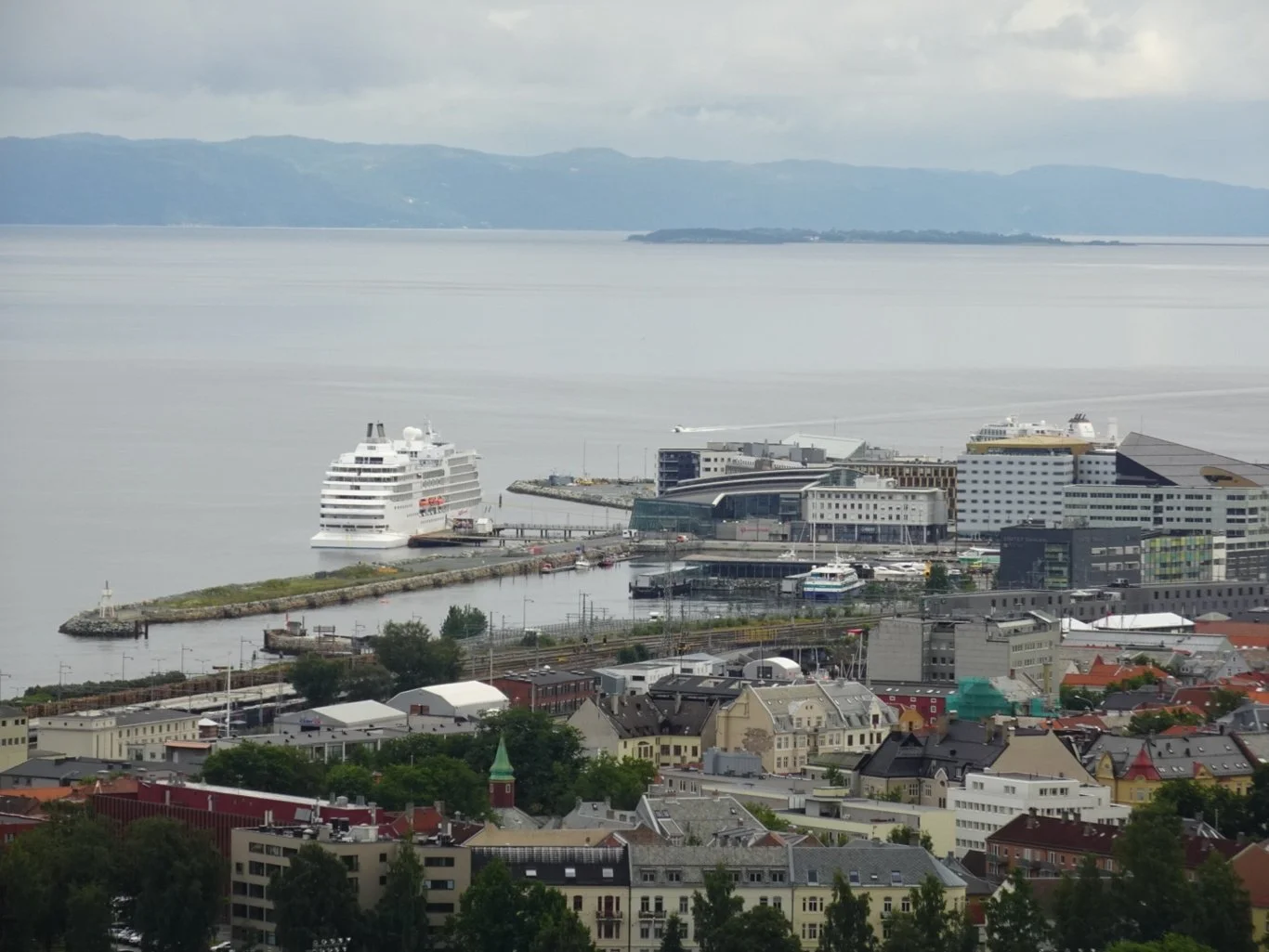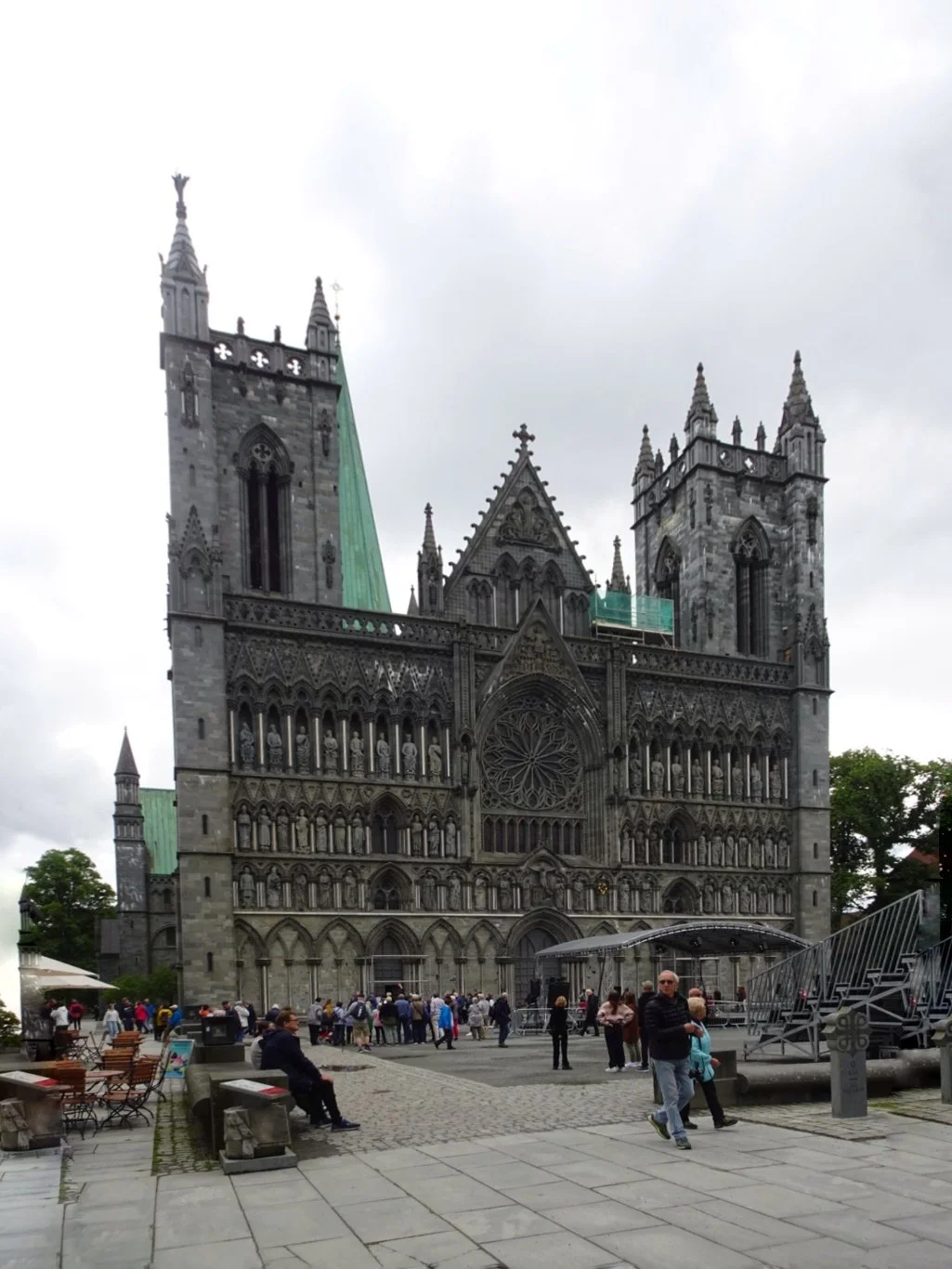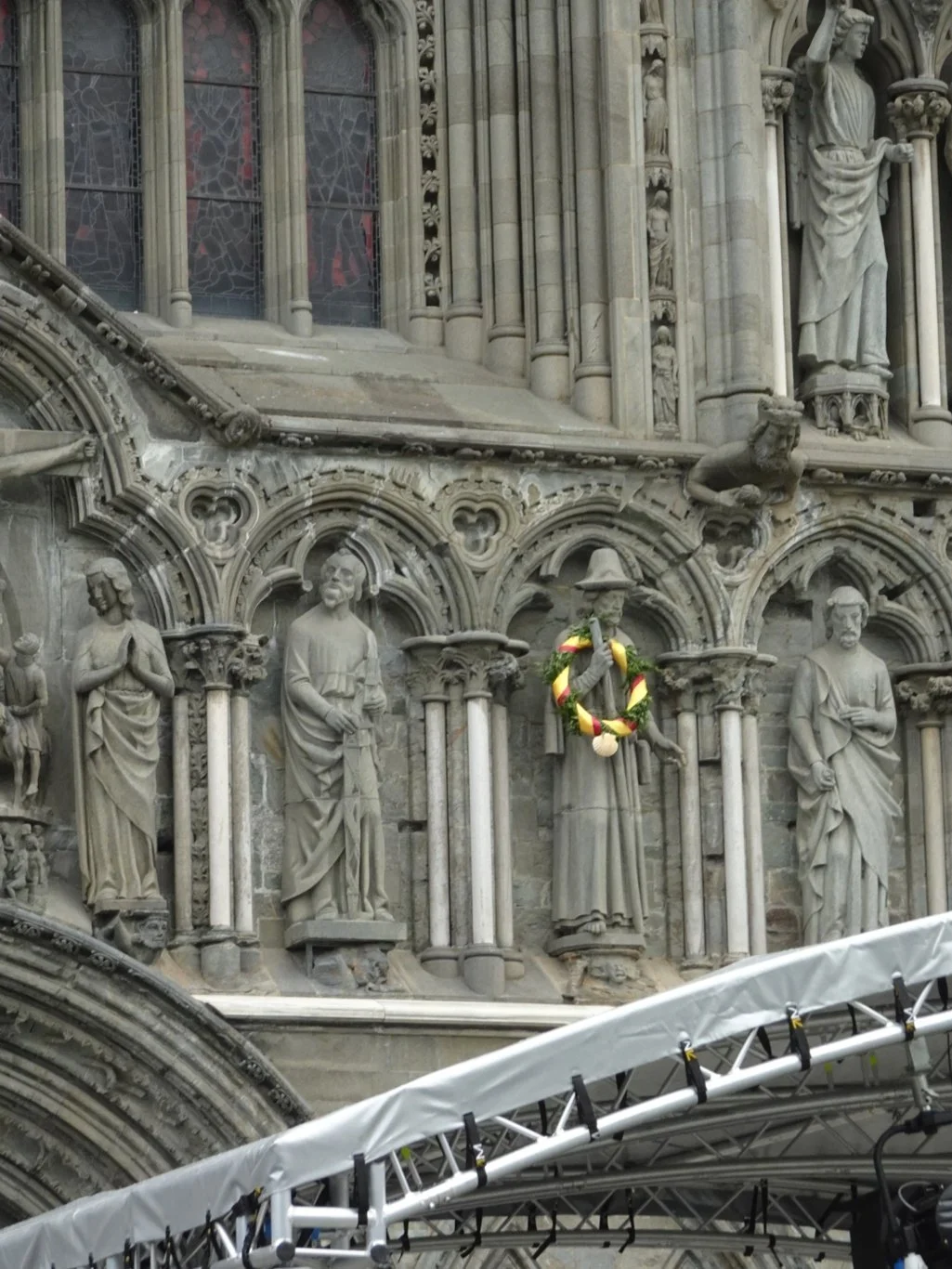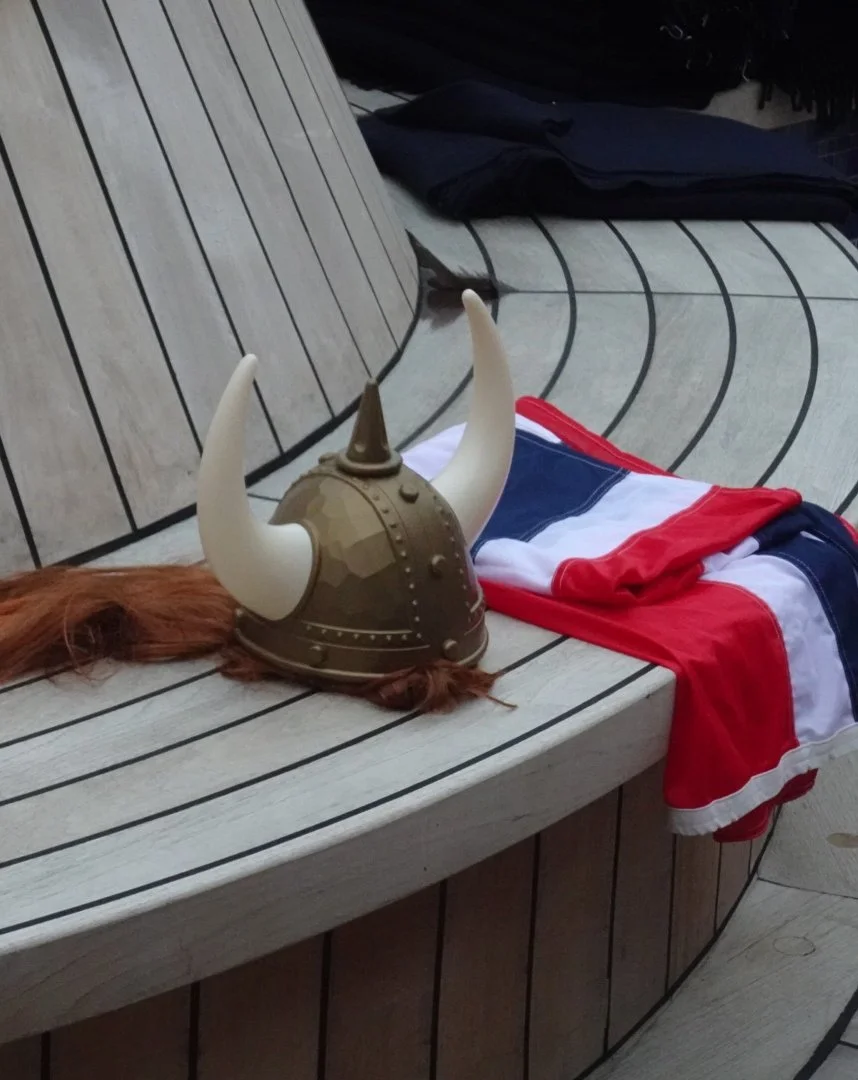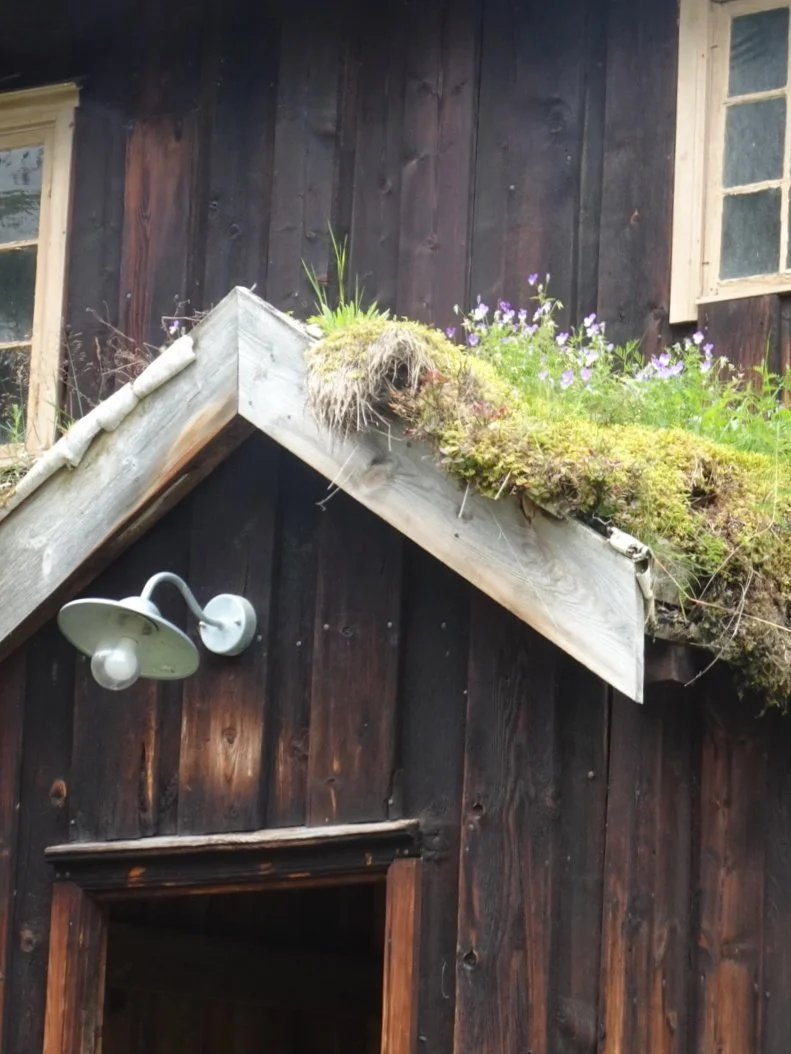To Trondheim
…or Trum-yam as it was pronounced by those who know that kind of thing!
We were greeted this morning by a young woman wearing traditional dress. Isn’t it lovely?
Our bus took us through the quiet city, doing a little sightseeing before heading over to the main focus of our morning, the Ringve Museum.
Norway’s National Museum of Music and Musical Instruments was described with enthusiasm in our guidebook and we’d not hesitated when we spotted it as one of the choices for today. We didn’t realise it was in quite such a beautiful location.
A former farmhouse, the museum stands high above the city with spectacular views to the fjord.
Not only that, but it’s surrounded by the botanic gardens of the University, so the parkland would have been worth exploring too, if we’d had the time. As it was, a quick snap of the meadowland by the car park had to suffice!
Our guide, Trond (pronounced Trum) met us in the courtyard and explained a few details before taking us inside. Trond had a delightful manner of speaking, rather quaintly English in style.
We stepped inside, into the first of a series of fairly small rooms - a good job we were a reasonably small group. The rooms of the former farmhouse were furnished in much the same style as they would have been during the time of the last residents, Christian Anker Bachke and his wife Victoria. Each room had several instruments on display, many of them members or precursors of the piano family and this first room was a fine example.
As always in such places, I find myself with an overload of interesting things: here there were beautiful decorative features on the walls and woodwork, masterfully painted in a palette of very Scandinavian colours. Whilst I tried to take some photos of that, I was also aware of some fascinating musical instruments on the wall - stringed instruments; variations on violins and violas.
Finally, just as I was madly scribbling things in my notebook, Trond began to play the little domestic pipe organ in the room. Oh my word.
It was operated much like an harmonium, with a foot pedal to pump the bellows, so his coordination was impressive. He didn’t even have the comfort of sitting down, but rather stood on one leg whilst pedalling with the other!
Any questions? he asked.
I was especially glad when someone in our group asked about the stringed instruments hanging by the mantelpiece, because I had noticed they had the same kind of string arrangement as a sitar, with a set of “drone” strings beneath those that could be played with the bow. We learned it’s a Hardanger fiddle, the second set of strings referred to as “sympathetic strings” which would reverberate when the primary strings were played, creating a distinctive sound traditional to Norwegian folk music.
I’d have loved to have a go!
We continued through the rooms of the museum, each one offering an interesting collection of instruments and related objects. Here was an unusual monochordium unium (or that’s what I wrote down!) for tuning keyboard instruments and alongside was a harpsichord, which once more, Trond sat down to play.
As we listened to Trond play snippets of Bach and Mozart, I found interesting passementerie to catch my eye and my Hero spotted a picture featuring his musical hero Joachim Raff.
Whilst listening to Trond play a traditional hymn by Norwegian Agathe Backer-Grøndahl, My eyes fell on the pretty handmade centrepiece underneath the glass dish.
I was glad I took a closer look - it was knitted!
We were standing in the room with the beautiful Swiss smoking table when Trond was speaking about the main group of Norwegian composers like Grøndahl, Tellefsen and others, I couldn’t help feeling there was an elephant in the room. Actually, a portrait of the elephant was hanging on the wall in this room, but we’d got this far and it seemed like Trond was not going to give good old Edvard Grieg a shout out! Finally, as we moved into the sideroom, there was a fleeting mention. OK. At least we didn’t have to endure some of my least favourite school orchestra music!
We were coming to an end of the museum tour and Trond was a little more relaxed. We smiled at his announcement, “Before I start grinding, let me warn you that this instrument was not designed to be played indoors”. Yes, it made us jump!
Stopping briefly to pay homage to the couple whose home this had been in a small room dedicated to portaits of them both and more recent photographs of Victoria Bachke with some of the instruments in the collection she donated, we made our way downstairs and across the courtyard.
We were invited to the former cowshed - now a concert hall - and sitting comfortably with a glass of sparkling wine we listened to a short recital played by Trond, of music by Grieg, Bach and Mozart.
What a fabulous place.
We made two short photo stops on the way back, firstly at a viewpoint above the city.
We thought Navigator was the only ship in port today but we spotted the Hurtigruten around the corner later.
Last stop of the day was to see the Nidaros Cathedral, where there were one or two people already. Some large metal staging structures made taking a few quick snaps somewhat challenging too. So we did our best!
We had one question: Just which saint is wearing a wreath today? We asked our guide who wasn’t sure, but upon returning to the ship we set out to find out. The answer? St James! His staff and hat might have given his identity away had we only but thought about it - I don’t think we would have spotted the bag of shells that are part of the design, however. His Saints Day was just the day before yesterday, which is why he’s still wearing his wreath.
So thank you Trondheim, we’ve had a lovely day from start to finish!








